The Ruins of an Abandoned Airport in the Pines
And the Lost Dream of a Supersonic JetPort
The Pine Barrens came into national notice when it was to be bulldozed for the futuristic dream of a Supersonic JetPort City with a fleet of Concordes. The closest that came to fruition was the Warren Grove bombing range, but other small airports had short lives in the Pinelands, and if you explore Google Maps near the popular hiking area known as the Black Run Preserve, you’ll see a strange marker in a wooded area, simply called AeroHaven. It was a mystery to me, and I wish I’d explored it before researching it: my finds would have had more wonder to them. But what I found was interesting enough, and hints to a lost past and forgotten future for the Pines.
Aero Haven was a grandly named small airport built in the late ‘50s and operated until the early ‘80s by a man named Bill Kennedy. After it was closed, some claimed it was used for drug runs, and the town dumped dirt in the runways. The Abandoned & Little Known Airfields website by Paul Freeman records the history of such airfields all across the U.S.A.; he interviewed a few local pilots who remember it, and wrote up a short history of the airport that’s worth reading. This photo is from the site:
It looks much different, now. Part of the former grounds is preserve and hiking trails, and some is fenced off for a recycling center. The ruins are mostly gone except for a pile of cinder blocks and some pebbled concrete that is completely overgrown and covered with sand. Coming upon desolate stretches of sand in the pine forest is haunting enough. Kicking through it and finding slabs of conglomerate that private planes once landed on really evoked the alternate history planned for this unique and beautiful natural treasure, a vision of a concrete and injection-molded metropolis that never came to be.
I wandered here looking for a geocache that I did not find. A fire had burned up another cache at Black Run Preserve, and this one was too deep in thorny brambles to properly search for, but I did find the remains of Runway 4 of Aero Haven airport. The cache was meant to lead you to this now overgrown and reclaimed area, and I found a lot to enjoy here, just not the cache.
Read on for these treasures and a video of someone flying over the remains of the runway.
The way in to Aero Haven is from the Black Run Preserve REI Trailhead, which has parking. Approach it from Borton Road, not Kettle Run, unless you have a raised AWD vehicle. Google will send you in from Kettle Run, which is a bumpy ride with a few muddy ruts. The other way through the golf course community ends in a cul de sac with a sandy road to the parking area that the average vehicle can navigate. And it’s that end that will lead you to Aero Haven.
The entrances to the old airport on Kettle Run Road have been blocked off, so the only way to the geocache and the airport ruins is a twenty minute walk through freshly burned pine forest, then across a sandy expanse with a bonfire in the middle, and finally along well-blazed trails that lead directly to the ruins through more pines. The runway has been repurposed for fat tire bike rides and bonfires safely kept far away from the flammable pines:
The wildlife seems to avoid this area. Maybe the fire drove them away and they have not yet returned. I heard birds but didn’t see many. I found a large American toad, gray and mottled black like a living stone embossed with lichen, but met no one else on my trek here. I also saw my first prickly pear cactus, which I did not believe really grew in New Jersey:
In the top left corner you can see some of the “conglomerate” concrete, mixed with shore pebbles, from which the runway was constructed. I’m not sure why that type of puddingstone—what a delicious name for it—makes me nostalgic for the ‘70s. I recall many buildings being built or at least cladded in it, and also benches and fountains in parks, from that era. It must have been a short-lived style. So it’s no surprise that Aero Haven’s heyday was in the late ‘60s, when the JetPort was planned.
I’m told some still wish that Jet City had been built, and brought jobs and commerce rather than a protected expanse of Pinelands to South Jersey. And while I generally prefer conservation rather than development, It would have been a very different future for the entire tri-state area if this had been built. Perhaps a large portion of the Pinelands would have remained protected, and high speed rail between the JetPort, Newark, Manhattan, and Philadelphia could have been realized. The New Jersey Turnpike and the Garden State Parkway, built in 1952 and 1957 respectively, would have remained, but not been as vital with a rail network in place. Newark airport and the trio of New York airports would have remained regional, with long-term and international connections going through the pines. The famous Blue Comet train that ran to Atlantic City from New York might have been revitalized, and never been the name of a Sopranos episode. It’s interesting to think about: The lost dreams of the future.
Here is a pilot flying over the former location of Runway 4, which will give you a good visual of the area as it stands today.
The sandy patch in the upper right is where my photo was taken. If you decide to visit, Donkey’s Place Too is in a nearby strip mall, and they make an excellent cheesesteak on a poppy seed Kaiser roll. If you walk to the runways from the Black Run trail entrance, you’ve earned one.
Next time:
Attending the 94th anniversary tribute and and reenactment at the memorial to pilot Emilio Carranza.




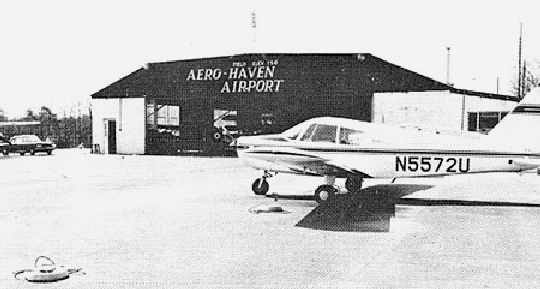

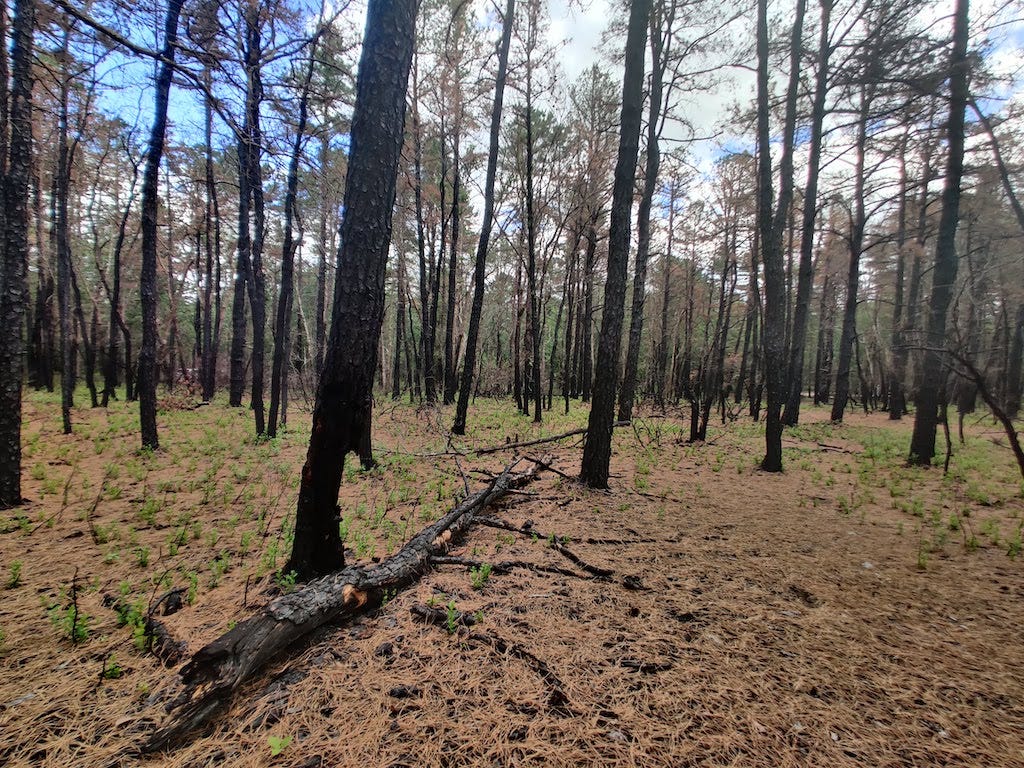
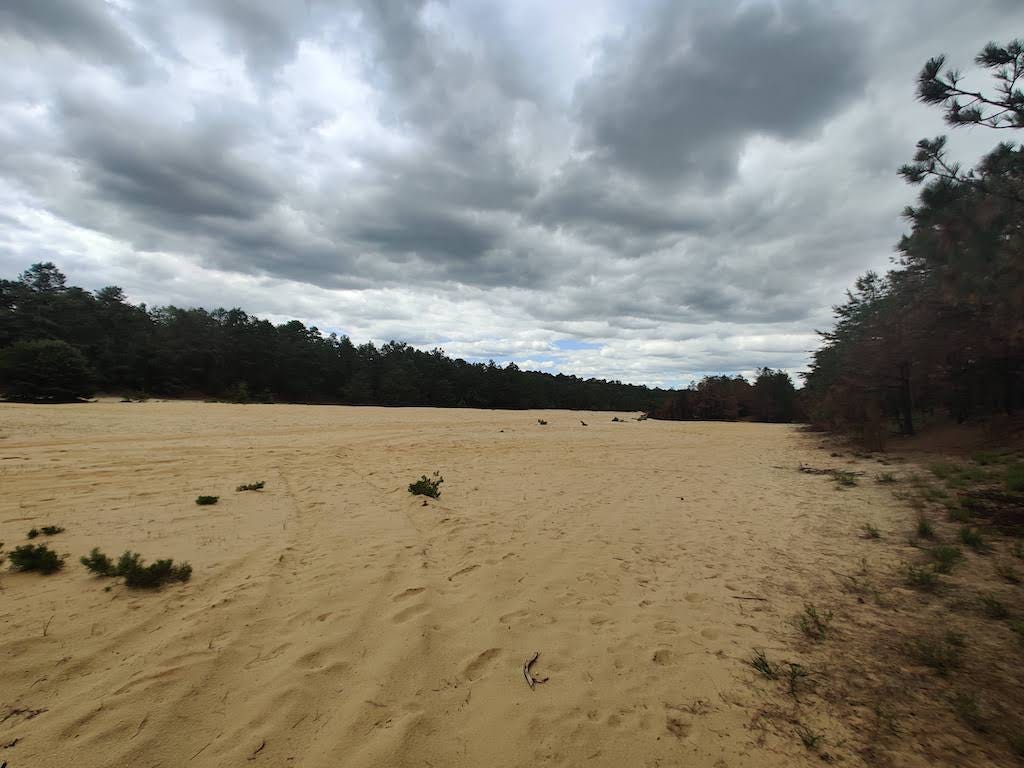
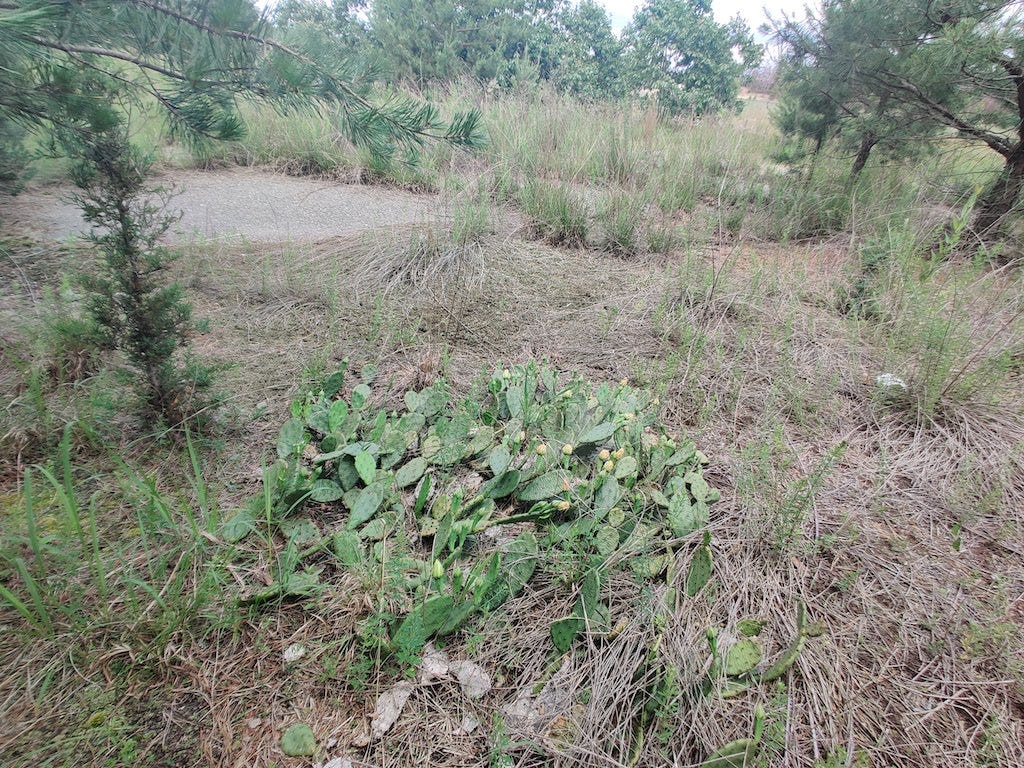
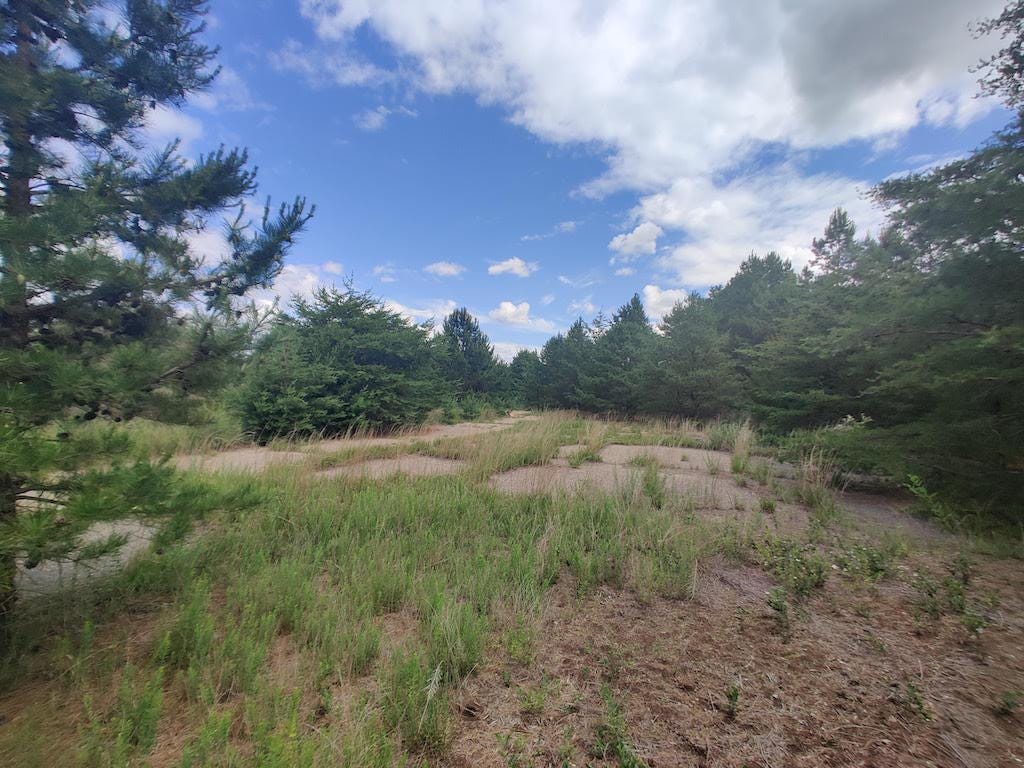
What a weird, fascinating place.
I was close :-)
https://www.wikiloc.com/hiking-trails/nj-black-run-preserve-south-2-0-miles-loop-july-20-2022-108398842